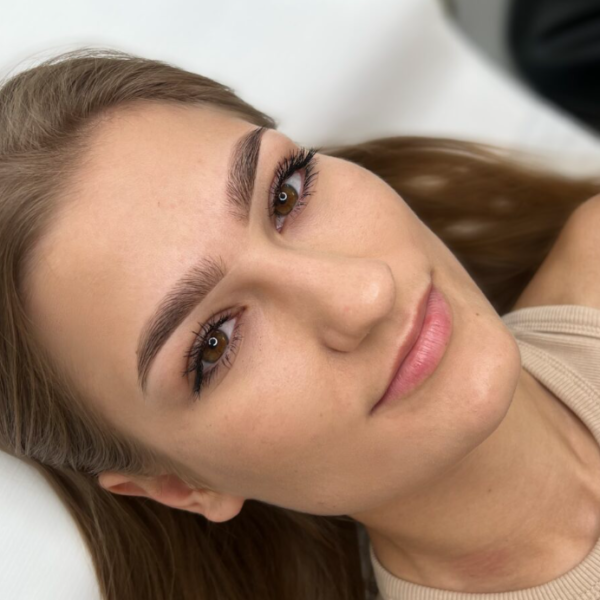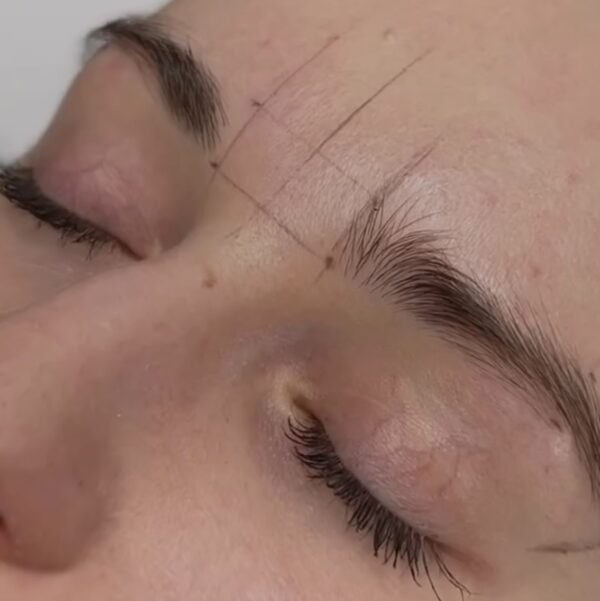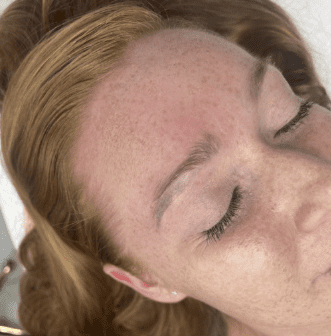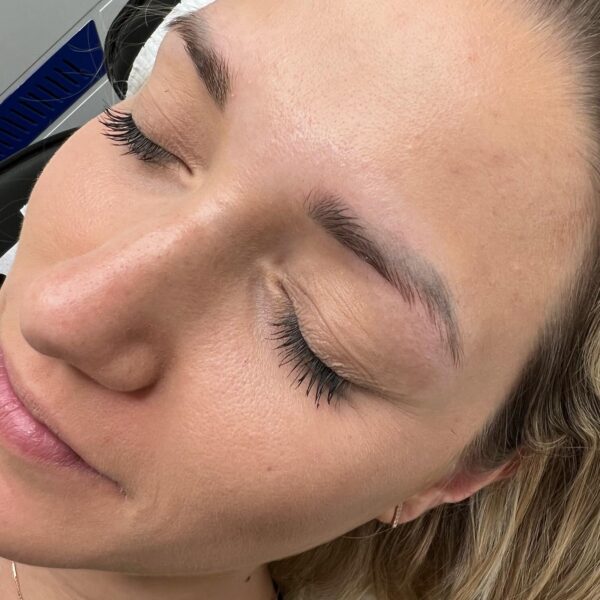-
Permanent makeup and eyebrow asymmetry
What possibilities can be offered by permanent makeup for eyebrows with asymmetry?
Permanent makeup and eyebrow asymmetry
What possibilities can be offered by permanent makeup for eyebrows with asymmetry?
The decision to have permanent makeup done is influenced by a variety of factors. It may be a desire to improve the arch of the eyebrows, to define a clearer shape, to fill in gaps, or, most often, to achieve eyebrow symmetry. Most women who come for a consultation identify the difference between the two eyebrows – which in some cases might be quite significant – as the most pressing issue. Many PMU Artists struggle with finding the best middle ground between the symmetry of permanent makeup and the asymmetry of the clients face.
What should be considered when doing a preliminary drawing of brows in case of asymmetry?
Pigmentation looks best where there is hair, so it’s always a good idea to keep as much of it as possible while improving the appearance of the eyebrows. When doing a preliminary drawing, which is usually schematic, it is important to realize that the drawing should match the face – not the other way around. As we know, there are many asymmetries on the face. Striving for 100% symmetry of the eyebrows can unnecessarily accentuate other existing imperfections.
The natural asymmetry that occurs in the eyebrows has various backgrounds and reasons. Sometimes it does not appear by accident. Our faces are not symmetrical. Their two sides differ from each other – cheekbones and temporal bones are accentuated differently, and eyes can have different shapes and positions. Similarly, the rest of the parts of the face – the nose, mouth, and jaw – often look different on one side than on the other. For this reason, we often speak of a ‘better profile’.


What affects the work?
Very often the eyebrow which is located higher is on the fuller and longer side of the face. The degree of elevation also depends on the arrangement of the temporal bones. Where the bone is more emphasized, the eyebrow arch will appear more elevated. The temporal bone flattens most often on the side where we sleep more often. In such cases, the brow often appears flat and without a clear apex. Another aspect that affects eyebrow elevation and any differences between the two eyebrows is facial expressions which are nothing more than movements of facial muscles. They get stimulated by the nervous system when we express our emotions. In the case of the eyebrows, the main muscle responsible for their movement is the so-called ‘frowning’ muscle. If the client’s eyebrow mimicry is high, you need to take into account that it may not be possible to achieve a symmetrical eyebrow appearance. While this does not seem to be a problem when the eyebrows are at rest, the image of eyebrow symmetry will be disturbed when only one side lifts strongly. In such a situation, you need to consider the pros and cons of performing the procedure and at this point, it is necessary to talk to the client. The arrangement of the hair, its density, and its thickness also affect the appearance of both eyebrows. Admittedly, such contrasts can be evened up with permanent makeup relatively easily. The restoration of such defects is included in the treatment.
The biggest influence on our perception of someone’s eyebrows is their front (head) part and whether the two eyebrows are of equal thickness and whether they lie evenly in relation to each other. Most often, in one eyebrow the hairs grow more firmly upward, while in the other they lay down freely which, at first glance, can cause an incorrect perception of the thickness of both eyebrows. Depending on how big the discrepancy is, this can be corrected to a greater or lesser extent by distributing the pigment accordingly.
When to consider refusing the procedure?
Compensating for the defects of a large asymmetry of the eyebrows with permanent makeup when the hairs are thick, dense, unruly, and protruding from the skin does not guarantee a good final result. If the asymmetry of the eyebrows is very large – when none of the lines and points of the eyebrow drawing on one side of the face match the corresponding lines on the other eyebrow arch – it is necessary to look at how the eyes are positioned in relation to each other. We often encounter situations where the client’s eyes do not lie in a straight line but slightly at a slant. In this situation, the preliminary drawing should be done in the same way and at the same angle. This will ensure that the asymmetry will not be further emphasized.
When it is not the arrangement and spacing of the eyes that is the cause of the asymmetry, it is worth trying to maximize the alignment of both eyebrows. Otherwise, you can simply refuse the procedure. It is never recommended to remove one eyebrow in its entirety in order to pigment it perfectly evenly to the other. It is also not advisable to shave the eyebrows. For aesthetic reasons, many PMU artists refuse to perform the procedure and often refer clients to aesthetic medicine treatments.
Knowing that our face is not perfect, there is nothing wrong with using permanent makeup to create an impression of symmetry rather than a mirror image of the eyebrows.


What affects the length of time it lasts?
How long does a properly applied permanent makeup last depends on the condition and type of skin, body, diseases, and lifestyle. Both organic and inorganic compounds are used in pigments. Depending on the type of components used for a given pigment, the particle sizes of a given color vary. The process of metabolizing pigment starts with the smallest particles. This is why, after some time, pigmented eyebrows may discolor into red, gray, or graphite. This is not evidence of an improperly performed procedure, but a natural process that occurs in the skin over time. It is recommended to refresh the color every 1-2 years or so to neutralize and darken the pigment. Permanent makeup is an injectable procedure, in which possible contraindications must be ruled out before proceeding. These, in turn, can be congenital and acquired, absolute and relative. Given that permanent makeup needs to be refreshed from time to time to make it look aesthetically pleasing, and that contraindications may arise over time, it is best to perform the procedure in accordance with the natural arch of the eyebrow. This way the client will not become a “prisoner” of an eyebrow arch incompatible with her anatomy.
Klaudia Kita
CERTIFIED COSMETOLOGIST | PMU ARTIST| SPECIALIST IN AESTHETIC COSMETOLOGY | LICENSED PMU TRAINER AND LECTURER
She runs her studio in Krakow, Poland. Her passion turned into a profession and for the past 5 years, she has specialized in eyebrow and lip pigmentation. She focuses on natural results, individual approaches, and subtle enhancement of each woman’s beauty.

Text and photos: KLAUDIA KITA